
Ramps (Allium tricoccum) are a unique West Virginia delicacy that gets mixed reviews; people are either fans of wild ramps or not; I say, ramp it up! Now, maybe you’ve never heard of ramps—except for slanted handicap ramps leading into a building. But I’m talking about a species of wild onion, a forest plant with purplish stems that miraculously appear in late March to early April at higher elevations.
These cousins of green onions and garlic actually look more like lily of the valley—so what’s not to like? Pick a mess of ramps – Beautiful and edible!
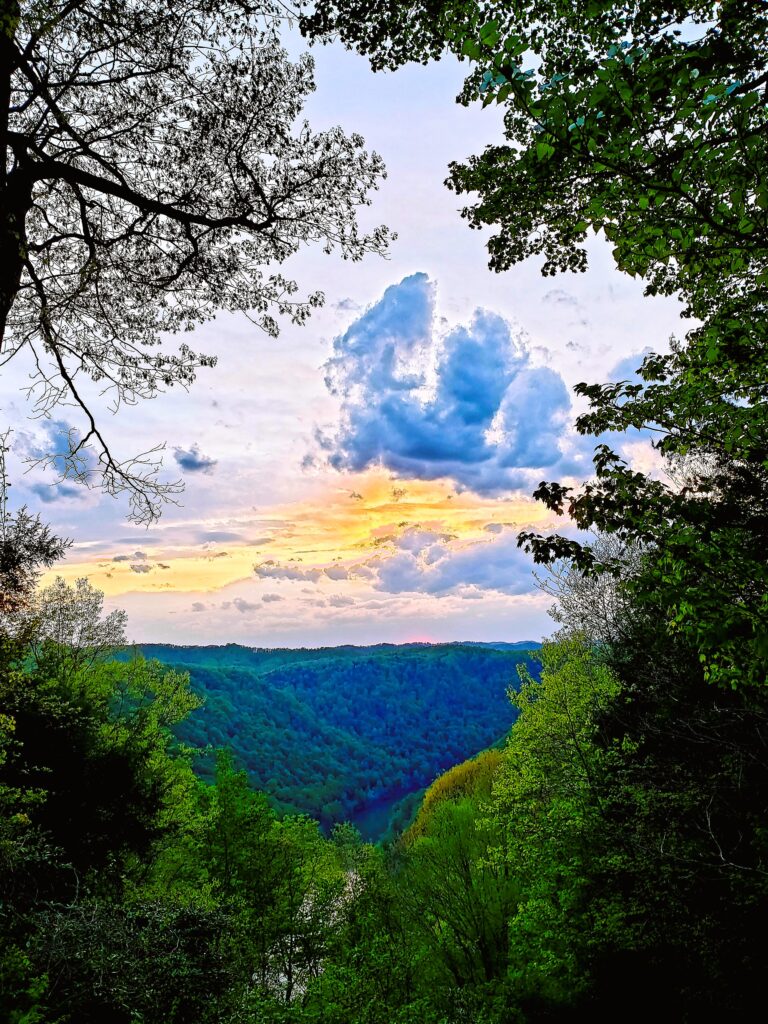
Table of Contents
Celebrating Wild Ramps

West Virginians lay claim to these wild leeks, having ramp festivals and offering unique dishes in local restaurants. They are the self-proclaimed ramp capital of the world! But, mainly because of the favorable growing conditions, these wild leeks also grow in the Blue Ridge Mountains and the Appalachian Mountains of Tennessee, North Carolina, and Virginia. As a matter of fact, the growing range of ramps extends from Nova Scotia down to Georgia and westward to Iowa! Haywood County, North Carolina, and Polk County, Tennessee, have festivals celebrating ramps, too. And some festivals even include ramp eating competitions. Ramp lovers unite!
If you don’t have access to a good patch of these early spring onions, you can find them in farmer’s markets and probably in a local grocery store. Ramp season is a big deal after a long winter! Ramps are a welcome harbinger of spring.
Ramp History
Initially, the plant with broad leaves was called “ramson” because it resembled an English plant of that name. Later, the name was Americanized to “ramps.” Ramps were used medicinally and held an important place in the area’s culture and culinary history.
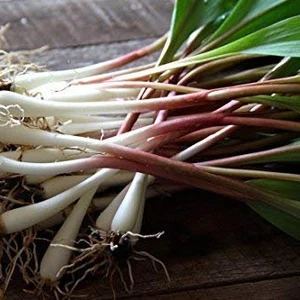
Native Americans in the southern Appalachian Region, like the Cherokee, used raw ramps as an ingredient for a spring tonic. (I confess, they do have the ability to “clean your clock”!) And, speaking of “cleansing,” ramps actually do have blood-cleansing properties. Plus, fresh ramps are loaded with vitamins! There are lots of Appalachian foods and recipes to be found online, as well as cooking tips in this article.
Cherokee boiled or fried the young plants to provide vitamins and minerals missing from their diet during winter months. Interestingly, researchers say that the Iroquois added salt and pepper to their ramps, so they had good taste! And, the Native American Objibwa and Menominee tribes dried and stored the plants for use during winter months. The Chippewa discovered that the root could induce vomiting, maybe from boiling too strong a broth!
Tasty Wild Ramps are Worthy of Attention
Ramps are complicated to describe. With a strong smell and strong odor, you would expect them to have a strong flavor. But they’re sweeter and milder than a scallion or a leek. And, depending on how you have them prepared, you’ll find yourself craving them until next spring!
A festival is a perfect way to try these delicacies. And, a buffet gives you a chance for a small serving of every possibility. Last spring (my first adventure into ramp-land), I had the wild-foraged gems cooked in pinto beans, ramp smoked meatloaf, Cider-brined Pork Wellington with Ramp Duxelles and Ramp Chimichurri, ramp-o’roni rolls, cheesy ramp and potato casserole, and ramp burgers. I’d be hard-pressed to pick a favorite way to enjoy these local delights, but French Onion—oops, I mean ramp—soup and Ramp Ice Cream (no kiddin’!!) are right up there at the top of my list.


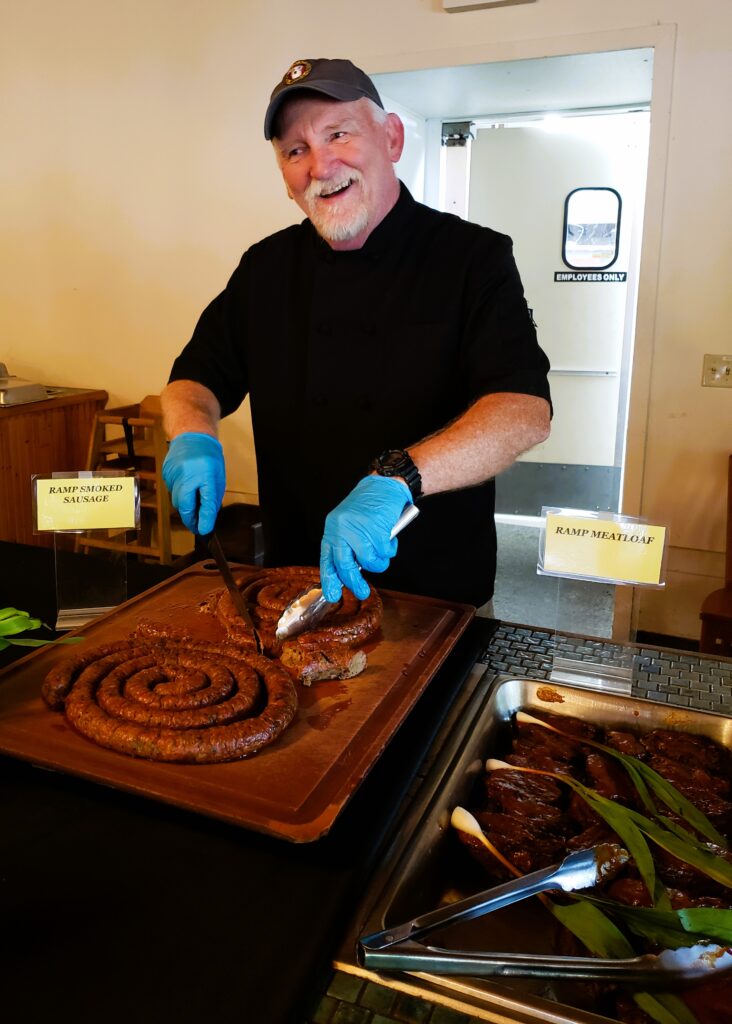
Serves up Ramp Smoked Sausage © Jo Clark
Festivals Take Root
Many restaurants started out offering ramp dinners that became so successful they grew up to be full-blown festivals. And ramp festivals have a long and rich history. Richwood, West Virginia’s Feast of the Ramson celebrates its 84th year in 2023! So, wind your way up the mountain for that April 22 feast!
The ACE Adventure Resort has scheduled its 4th Ramp Festival for Saturday, May 6. Located on 1,500 acres, ACE is next to the New River Gorge National Park. ACE provides white water rafting the on the New and the Gauley rivers. Plus, the resort has cabins so you can eat, listen to live music on the Lost Paddle outdoor stage as late as you’d like, and walk to your place for the night.
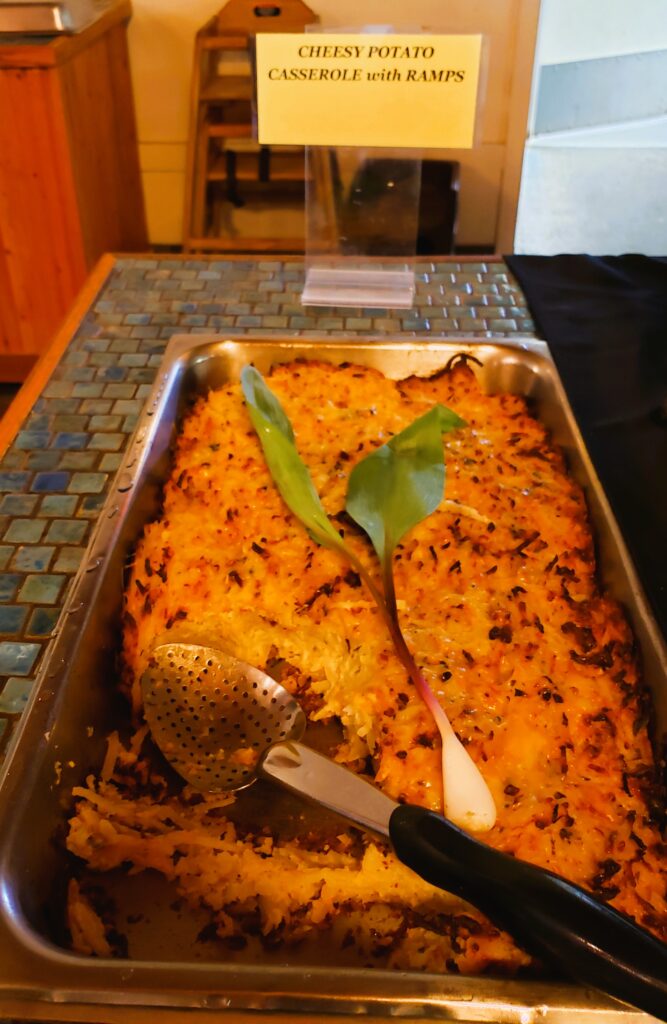

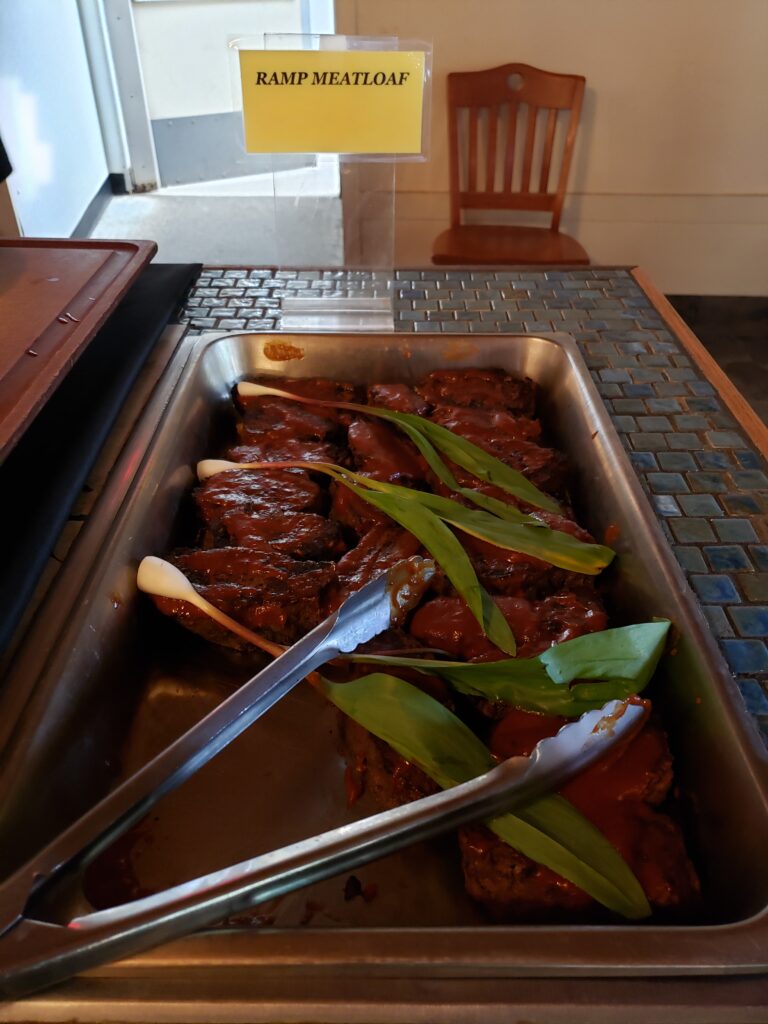
Insider Tip:
Take a left out of ACE’s parking lot and go to the end of the road. There is a deck clinging to the mountainside called Concho Overlook; and, OH MY, what a view!
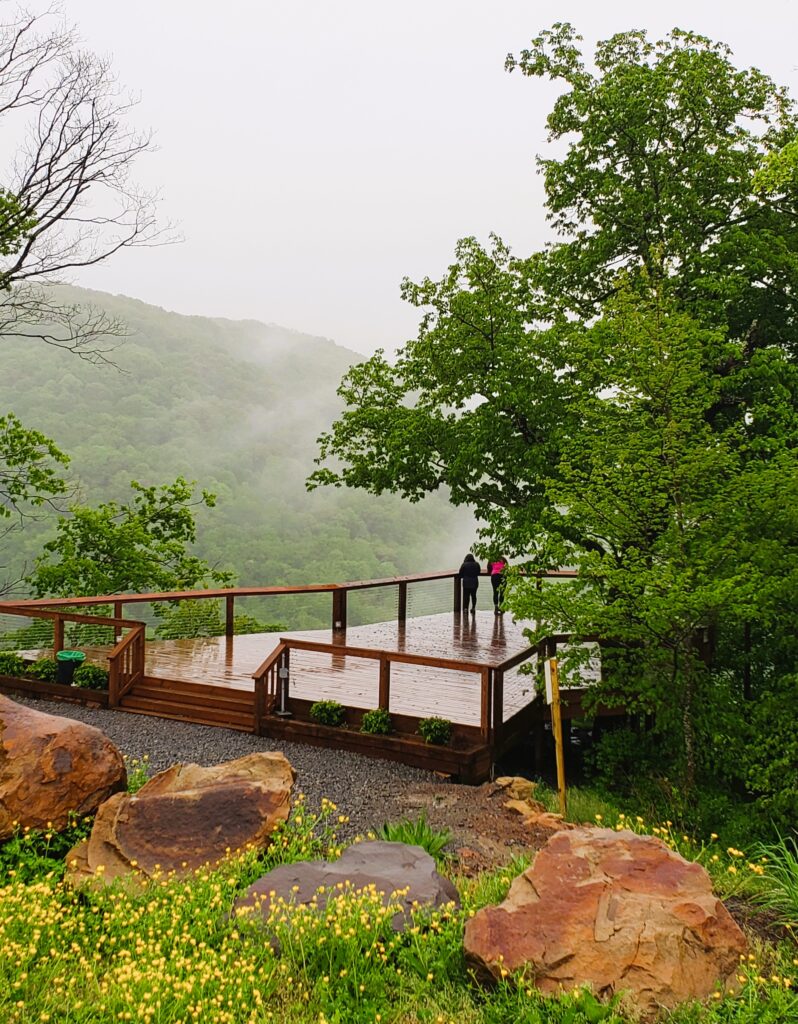
Ramp Up Your Cooking
Like small spring green onions, ramps are delicate, sweet, and flavorful. So, when you cook them, sauté the ramps in butter or bacon grease (or, even better, a combination of the two…yum!) And, you can pair them with other fresh spring vegetables like asparagus and little English peas. Or, you can sauté the tasty morsels with potatoes, add them to scrambled eggs, or to cheese biscuits to ramp up your day. Ramp season is fleeting, so don’t waste any time! If you don’t have enough ramps for your recipe, try a combination of onions and ramps to get you through.
ACE has some delicious-sounding recipes on their website (and yes, it includes my favorite—ramp ice cream!) If you don’t live near the mountains, try making them with spring onions mixed with shallots. Now, the results may not be the same, but I guarantee they’ll be extra tasty!
Where (and when) To Hunt Ramps
Ramps grow in clusters, usually underneath deciduous trees and near creeks. Since they like rich soil, a grove of trees in a pasture is a great spot to look for your own ramps. You should spot two shiny leaves growing from a white bulbous root. Then, as the stalk matures, a cluster of tiny, white flowers emerges, looking a bit like Lily of the Valley but not smelling as sweet!
Traditionally, ramps are gathered wild. And, the increased popularity of ramps in recent years means that demand may exceed supply (economically good for providers). Still, the plant isn’t commercially cultivated. I believe remaining a seasonal treat is best. It gives you something to long for and look forward to—like Eggnog! *drool*
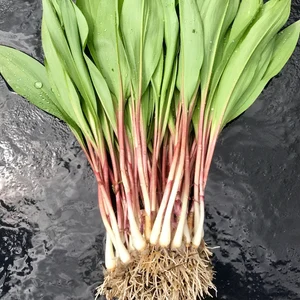
Unfortunately, ramps have a slow life cycle. They grow and flower in the spring. The flower produces tiny seeds that dry from the summer heat and drop to the ground. Then, the seed must go through a cold cycle (cold stratification) before the plant emerges. The entire life cycle of one plant takes five to seven years! Meaning, a ramp patch can take twenty years to become established. And, when you harvest, you remove the whole plant. This means the life cycle ends in your skillet!
Legal Locations for Ramp Hunting
Yep. It’s true. You have to worry about the law when hunting—even for ramps! You need permission to traipse across a farmer’s land. So, do the mannerly thing and ask!
The National Forest office says you don’t need a permit to gather ramps on Monongahela National Forest land for personal use. BUT, you can only harvest 2 gallons (about 180 plants) per person. Harvesting by commercial users is prohibited; commercial use includes any dinners or festivals that receive payment.
As for general guidelines, the park service asks that you only take plants from patches of 100 plants. And, in any patch, you should gather only one-fifth of the whole plants, to ensure the patch continues to spread and thrive. In addition, if you can tell someone has already harvested the patch, move on to find an undiscovered patch! If you pick bouquets of the tiny blooms, take them from plants you removed, leaving flowers on the remaining plants to drop their seeds and start new bulbs.
It’s more fun to explore and find your own patch, but, *Ssshhhhh!* keep it quiet! And, here is another tip from the park service: use a small soil fork or trowel, not a giant shovel that will damage other nearby plants and roots. After digging, fill the remaining holes with soil and leaves.
Call Before You Dig
However, in regard to ramp digging anywhere else, the answer is probably a big “No!” The law forbids destroying, cutting, breaking, removing, or taking any plants in national parks, West Virginia State Parks, or state forests. This is probably true in any state, so be sure to call before you dig! This explains why people who find a patch keep their mouths shut and blindfold visitors!
How to Grow Ramps
Try growing your own if you can’t find wild ramps. Blake Borchardt has an online shop and sells ramps. Visit The Wild Leek and order enough ramps to cook a mess for your dinner. Or, you can order plantings and start a patch out back under a shade tree.
Ramp Effects
People wonder whether ramps will make you, well, stink. They are in the onion and garlic family, which is a distinct possibility. In reasonable quantities, you should be fine. The more you eat, the stronger your breath and sweat may be. Vampires, beware!

If You Go Festival-Hunting
Ramp dinners and festivals celebrating ramps are unique culinary experiences. The meals are easy to research online, and West Virginia Explorer has a lengthy list. This year, the first one scheduled was the Marlinton Presbyterian Church Ramp Dinner on March 25. And the last one listed for 2023 is on May 7 at Frametown.
Visit ACE Adventure Resort in Oak Hill on May 6 to attend their 4th Annual Ramp Festival. I attended this one last year and have dreamed of returning for nearly a year! The area chefs were at their best and had food stands set up to showcase their dishes. Plus, several area vendors served samples of their drinks. My favorite was the Hawk Knob Traditional Cider, poured by the director of Hospitality and Sales, Jason Nerenberg of Hawk Knob Cidery.

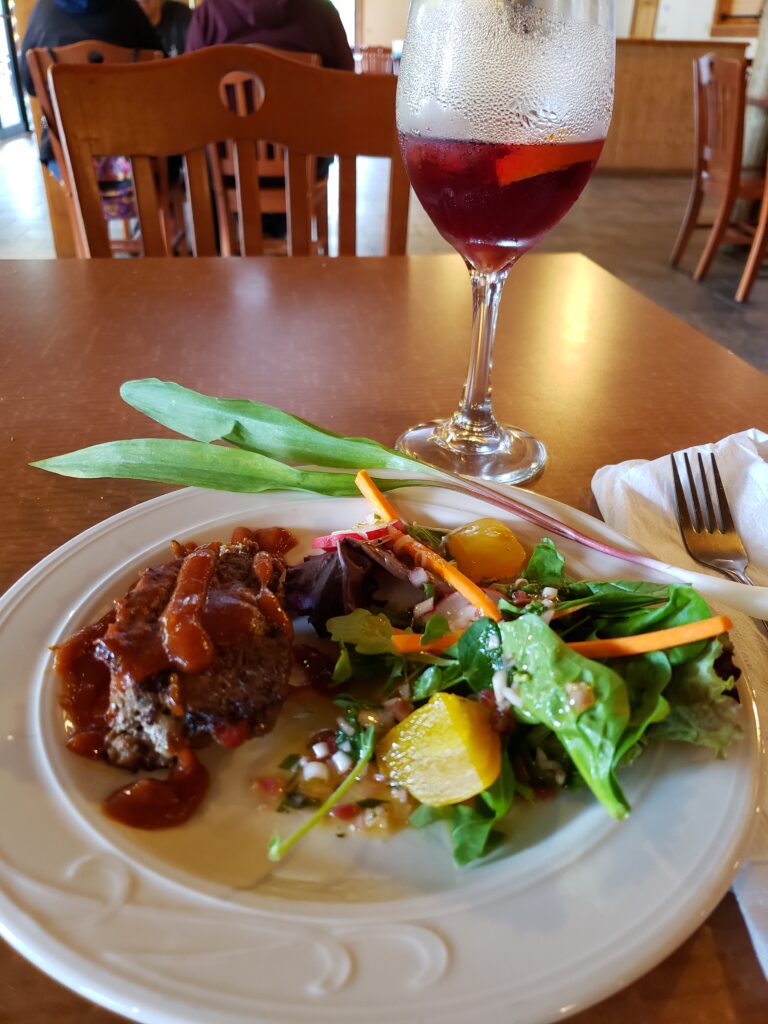
Hawk Knob’s Traditional Cider is wild-fermented and barrel-aged. Also, they produce an Appalachian Classic and a Barrel Heritage (aged in bourbon barrels—yum!) And, there is Elderberry-infused Cider, a deep purple cider, that makes a pretty tasty Sangria!
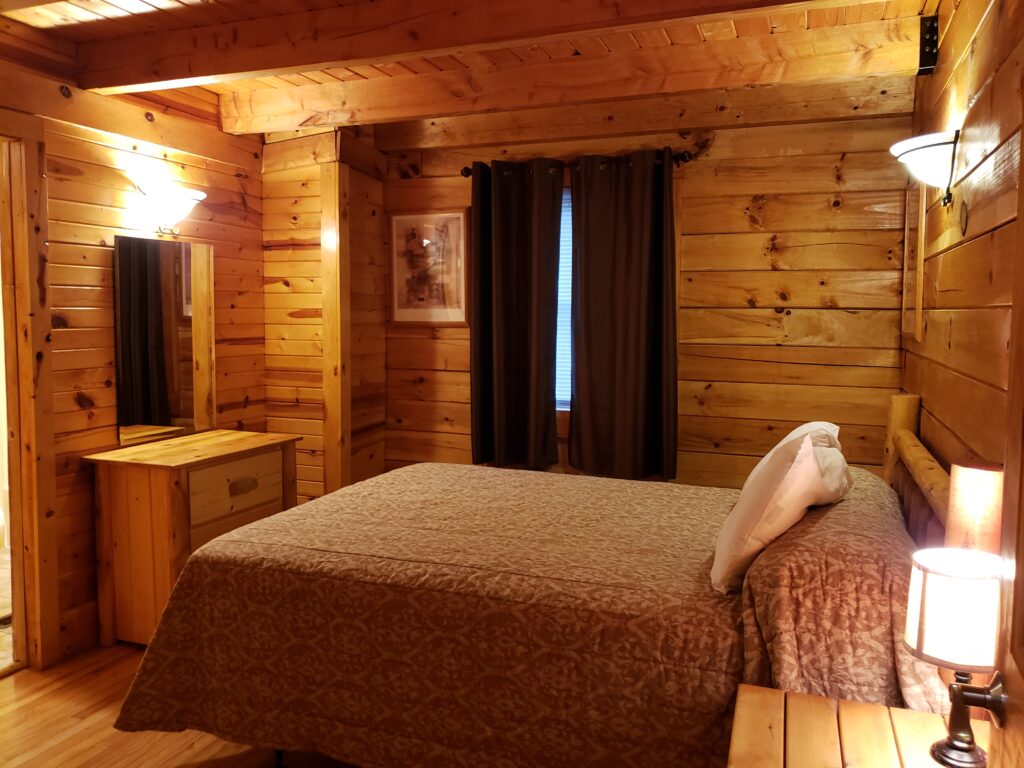


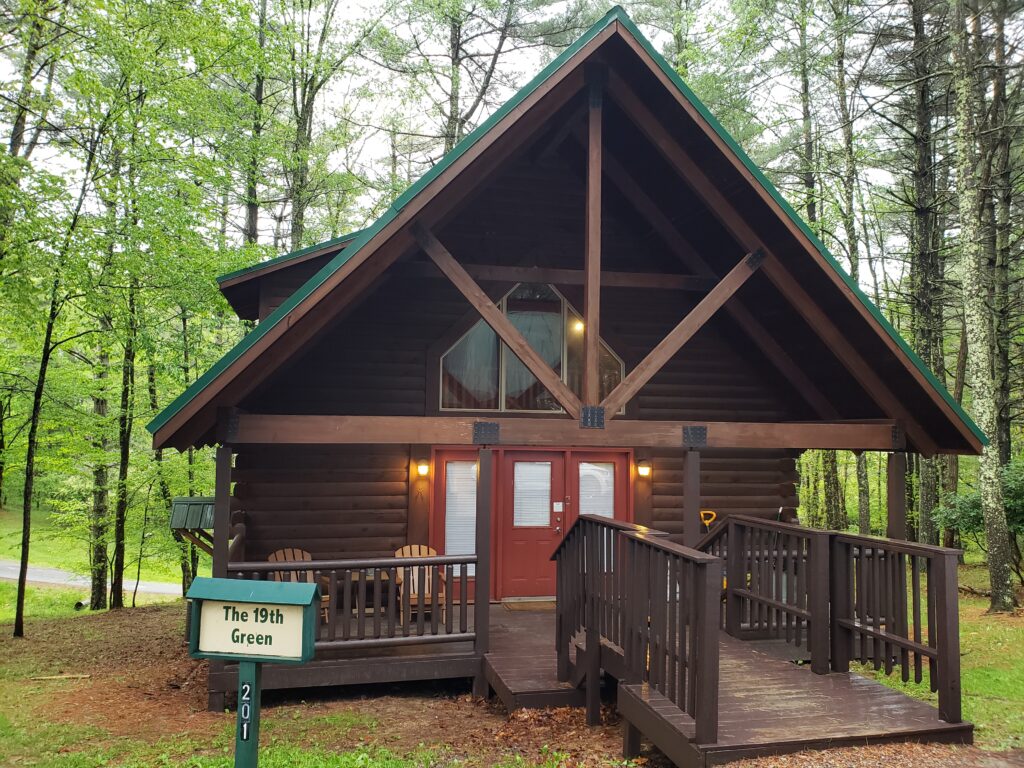

A Cabin in the Woods
The Cabins at Pine Haven in Beckley is a perfect place to stay for the weekend: privacy, peaceful surroundings, and a hot tub on the back deck. I stayed in the one called the 19th Green, which may give you a clue as to some other nearby activities *smile*. One-, two-, and three-bedroom cabins are available, plus two tree houses! What fun! And, believe me, after a full day of ramping, a glass of cider and a soak in the hot tub was just the ticket!

If you can’t make it to any ramp festivals or community dinners this year, well, I sure am sorry. But you do have plenty of time to make plans for next year! See you at the table!
Ready to plan your next trip?
For more exciting vacations, try these locations!! You could travel to LaGrange, visit Funky Floyd, or cruise off to Alaska!

Ramps! What not to love! Great article. Great photos.
Thank you, Kim!
You’ll have to make a pilgrimage to W Va and taste them for yourself!
Wonderful read! Was great having you last year. Hope you are able to visit ACE another time!
Thanks–glad you enjoyed my article! Attending the ACE ramp festival was definitely a highlight of my springtime trip!
Do ramps grow in Canada anywhere? We can grow garlic and leeks in the summer .
I’d think you could grow ramps there. They like higher elevations (check!) woodland habitat (check!), and shade and dampness (check!). BUT…they need to be in growing zones 3-7, so only in the more temperate areas, near the US border, or over on the Atlantic coastal region.
Great piece full of interesting tips. Well done.
Thanks so much! Ramps get a bad rap for being strong, but properly prepared they are delicious!
I had never heard of Ramps before this. Loved reading the article. I doubt if we get it in India as well.
It is an interesting plant! I wonder if you have wild onions in your mountainous areas.